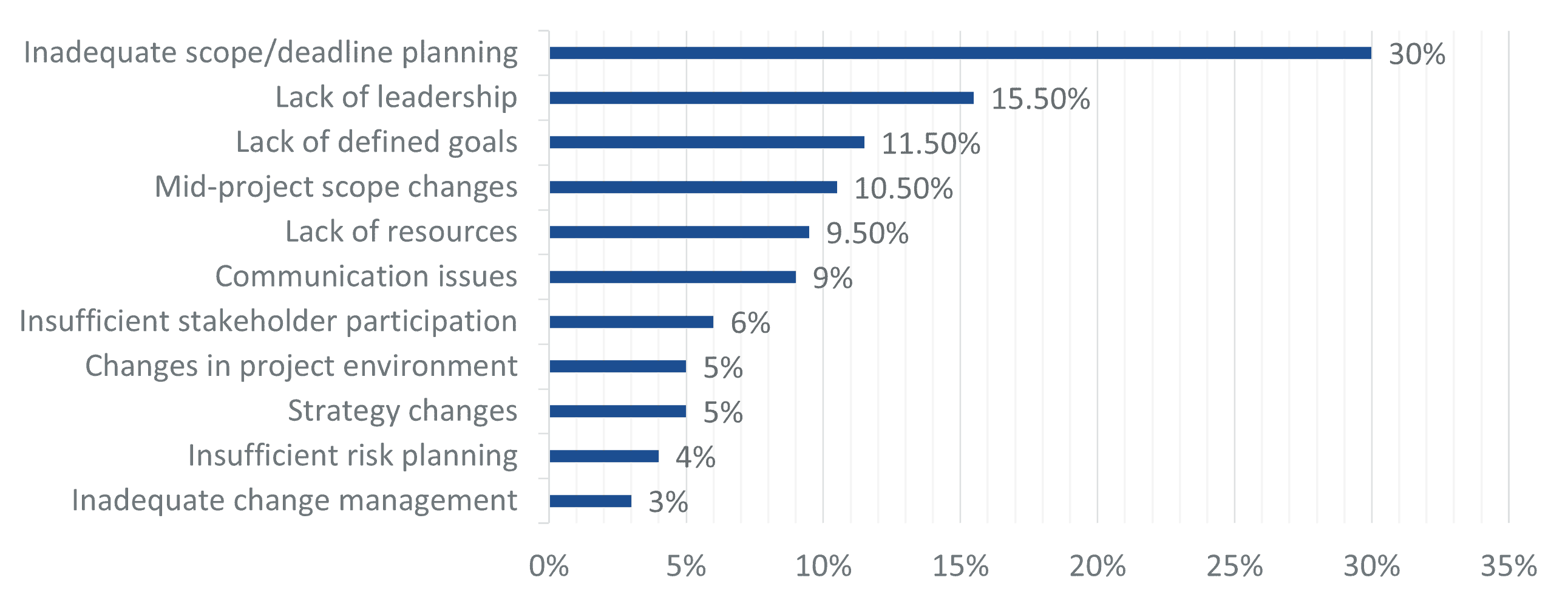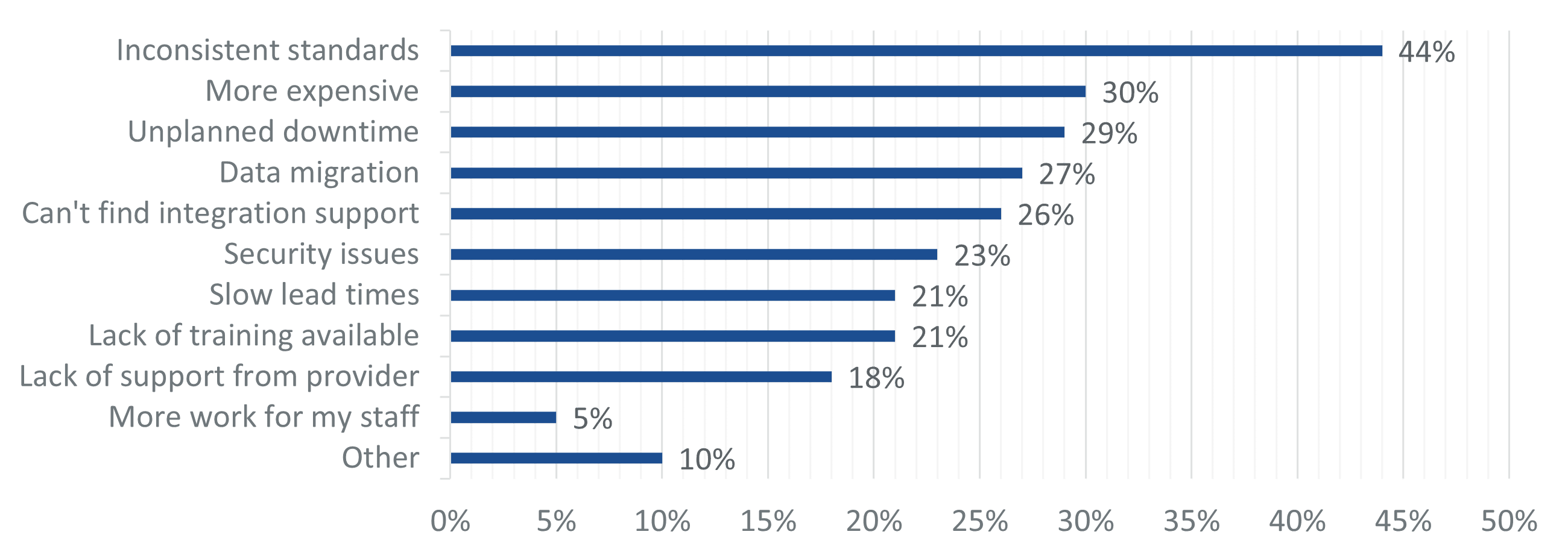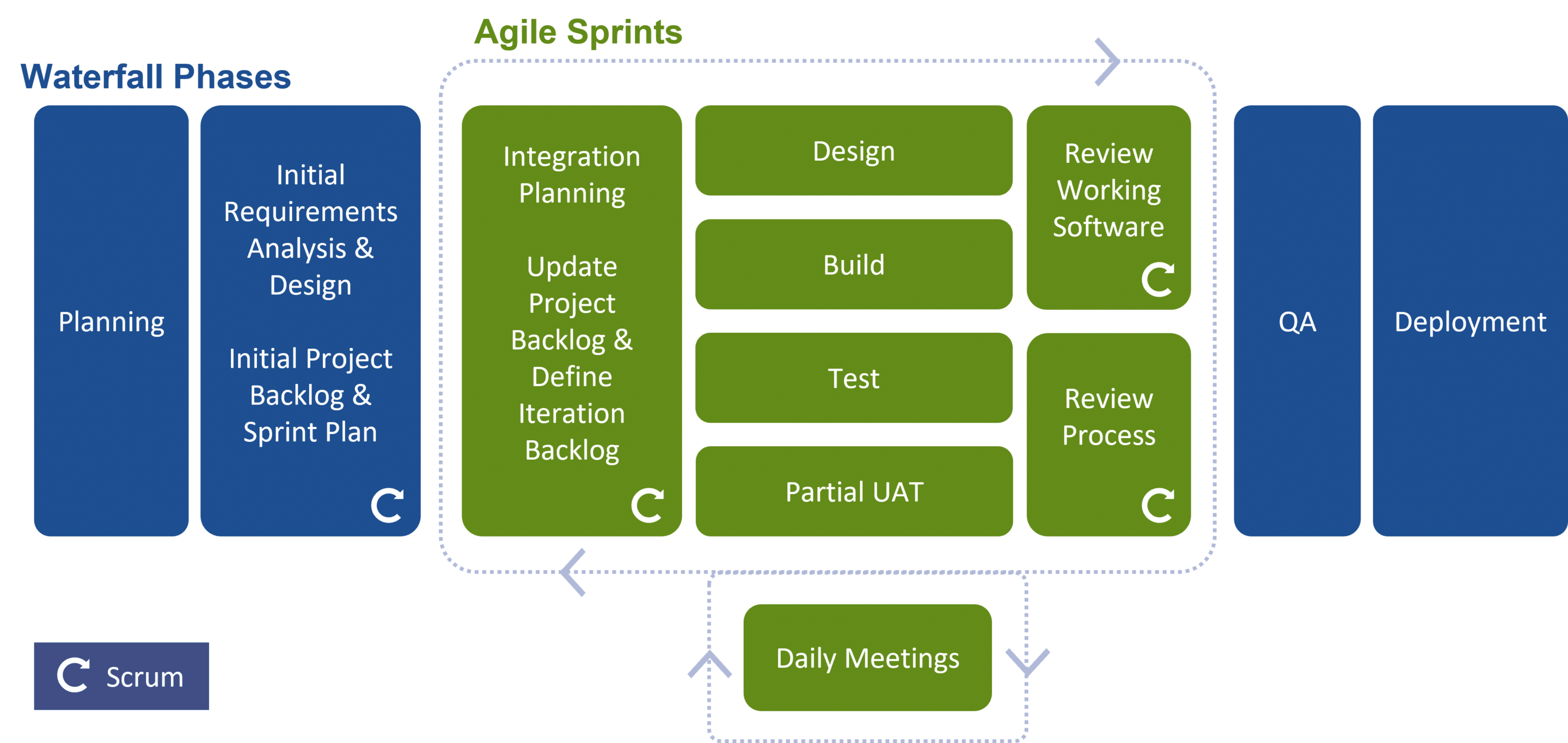Maximize ROI From Your ERP Investments
Author: Pramod Alluri | | November 1, 2022
ERP: In the Beginning
Time and cost have always been influential factors in the evolution of ERP. If we were to look at the history of ERP, it started as Materials Research Planning (MRP) software solutions in the 1960s when large manufacturing enterprises used the solution for production planning, scheduling, and controlling their inventory.
Eventually, organizations wanted to build their own MRP systems, and when the applications of the technology went beyond manufacturing and inventory, the term Enterprise Resource Planning or as we all know it ERP was coined by Gartner Group.
If we are to track the evolution of ERP, the journey of every ERP evolution or any revolution in IT was driven by an influential factor, “challenge”. Whether it is a product or a service or a process, whenever there was a “challenge” faced by the IT sector, an “evolution” has eventually followed.
If we investigate the history of ERP, initially the problem that organizations faced in implementing ERP solutions was the time spent in the requirement gathering phase. Organizations had to spend months just planning the requirements of their ERP and yet, they had to face many challenges in sticking to the defined scope during the implementation stages. Due to the conventional waterfall nature of the project development, even a small change or a revision in the scope could lead to significant budget and timeline changes.
The waterfall development approach was all about defining the system, gathering requirements at the first stage, and then following that scope in a sequence. This meant without 100% completion of the methodology stage you cannot move to the next stage, which becomes costly and leads to slipping deadlines. This rigid model introduced issues when an organization experienced changes/unexpected revisions in its scope. This development and implementation methodology only allow you to traverse to the next stage once the current stage is completed, which led to cost overruns, delayed project completion, missed expectations of buyers, and disruption to company operations and personnel.
The introduction of the Agile development methodology in software development represented a new process that could address some of the issues represented by the waterfall approach to implementing ERP solutions.
Because of the flexible nature of Agile methodology, the organizations could now easily integrate the last-minute changes or unexpected revisions in the ERP system and can also justify the cost of development with the variable Time and Material payment options.
Moving forward in time, ERP is now cloud-enabled, and most organizations are now experiencing firsthand the paradigm shifts from the on-premises ERP solution to the Cloud platform. If we look closely, even this change was initiated by the challenge of cost, resources, and time.
Organization’s resistance to maintaining and creating huge data infrastructures for the on-premises ERP solutions led to the cloud transformation and gave birth to cloud infrastructure alternatives.
What makes ERP successful is its ability to adapt and for every challenge that ERP has faced over the years, a new evolution periodically has followed, marking an era of growth and convenience for the customers.
The Acceleration Phase:
But there is one challenge in the ERP ecosystem that has still prevailed over time and is not yet addressed completely. Organizations still struggle with optimizing the value of their ERP solutions for the “time” and “cost” that they are investing in ERP development and implementation.
Even when the cloud transition has accelerated the growth and value of the ERP solutions with its SaaS-based applications and diverse modules of core business processes oriented to specific business functions, organizations still face challenges.
If we look at the biggest challenges of ERP and cloud transformation, many surveys state different project and transformation challenges as listed below in the graphs that are accompanied during the implementation phase. Out of these, “inadequate scope and deadline planning”, “lack of definitive goals and mid-project scope changes” along with “inconsistent standards” are the biggest factors that organizations are facing while implementing ERP and Cloud transformation respectively.
Enterprise Application Implementation Challenges Today
Key ERP Project Challenges

Key Cloud Transformation Challenges

If we are to analyze these challenges, we in technology understand that nothing is just black and white. Organizations are committing significant budget to the implementation of ERP and the biggest problem is that they are not certain if their expectations or profit to be driven from that investment would be justified within the expected time.
How do we solve these problems? Organizations still do not always see optimum “value for money” for the time, effort, and cost that they are committing toward ERP solutions and Cloud transformation. Organizations are expecting a rapid project configuration and deployment service that will have their Cloud ERP up and running quickly and efficiently.
The Transition Phase – Speed to Value:
With the increasing competition in the market, organizations are striving daily to increase their efficiency and profitability. Thus, they must ensure that the money that they pump into the technology is returned to them as quickly as possible well in the expected time.
Every organization has its processes and protocols and its tolerance of change when it comes to digital transformation. This also means that every ERP implementation and cloud transformation journey will also be different and will have various complexity levels. The increasing customizations, planning, and unforeseen project dependencies during the implementation phase can lead to increased timelines and cost overruns.
The ERP consultants and ERP managed service providers and implementation partners must be able to create a standardized implementation package/process that will encompass a fixed timeline and fixed or a determined budget in the ERP world making contained ERP transformation decisions easier for businesses.
For medium and small scaled businesses that have limited resources and are willing to invest cloud transformation when they start seeing financial results from it, the core requirement is all about generating ROI as soon as possible.
Just like software products start with MVP, cloud and ERP consultants and managed services partners must start with rapid ERP implementation services that are based on one single driver-generating results faster for the customer.
The best solution is to combine the strengths of Agile and Waterfall methodology to create a value-driven implementation where organizations can get the best of both approaches.
This means that the organization must adopt a “collaborative/hybrid implementation model” depicted in the diagram below that aims to combine both the models – Waterfall and Agile. This leveraging of both the Waterfall and Agile approaches ensures the success of the project. It removes the disadvantages of both models while bringing together the advantages of both.
In This Model:
- High-level design and requirement analysis/gathering is prepared as per waterfall principles.
- Coding, testing and deployment/implementation are done using agile methodology. This also ensures agile delivery, enhances collaboration, embraces changes to scope, and maintains compliance with standards.

Before we move toward the nuances of the above approach in detail, first let’s understand the challenges that organizations want to get addressed within today’s ERP.
Reasons Why Businesses Are Willing to Invest in Cloud ERP Solutions:
- Streamline and automate core business processes and functions such as HR, Finance, Operations, Supply chain, Marketing, Sales, and R&D to identify opportunities faster by unearthing important data across the enterprise
- Increase the overall efficiency, productivity, and profitability of the business
- Create effective data points that can empower data-driven decision-making capabilities
- Create a centralized data flow that can help all the peers get relevant information at a tap of a button
- Secure access to data with effective access control and availability on various desktop and hand-held devices
Challenges That Organizations Are Facing:
- Limited resources in terms of technology budget and Technology experts
- Inability to see a timeline of cloud maturity and automation after the “go live” day
- The problems faced in justifying the variable costs and extended timeline of ERP development to the stakeholders or decision making
How can a hybrid ERP implementation combined with a fixed fee and fixed timeline address these challenges, reap, the benefits, accelerate project success and help an organization realize its investment value with better returns?
Small and medium organizations that do not have a huge technology budget and can have a definitive scope and medium complex processes can be enrolled in ERP with a Rapid ERP implementation model with the packages that will help them establish a tighter link between diverse business functions. Methodologies can be repurposed to produce expected results in lesser time and lesser cost with a definitive and discussed scope.
Defining and Creating Modules Configuration and Deployment:
For organizations that do not want to go through with complete cloud transformation but wish to start with ERP in smaller phases, Managed services partners can create custom packages containing different modules of the Oracle ERP ecosystem that help speedier business planning across line-of-business units and more efficient operationalizing of those plans into revenue- ready products and services.
The idea is to use your past data to analyze the best combinations of ERP modules and create different fusion modules that can be easily configured and deployed when the scope is limited and fixed.
Setup and Configuration of Multiple Fusion Modules, Each with a Defined Scope:
If the organization is willing to spend time and effort helping the ERP implementation partner define the scope of the projects, they can easily choose the fusion modules that will best fit their business. These modules can then be implemented and integrated with Agile development methodology.
Fully Provisioned and Working Production System, Ready to Use with a Fixed Cost and Fixed Timeline:
The result will be the rapid implementation of a ready-to-use ERP system that is SaaS-based and cloud-enabled within the defined cost and time. Organizations will not only know the time and money that they are going to commit to the ERP system implementation well in advance, but they will also know exactly what functions are going to digitize and what will be the new capabilities of their ERP system will empower their people and them.
The idea is simple, if you could provide better visibility and predictability to the customers well in advance, they would be able to make informed decisions about their cloud migrations from on-premises quickly and if the implementation partner could help picture success, the chances of not only on-time, on-budget success would be higher, so would the business outcomes. The organization shall be prepared in advance for what is coming their way and when, how and which of their business processes are going to get integrated to produce what kind of results.
A fixed fee, fixed scope and fixed timeline ERP implementation for an organization that will ease business operations while gaining higher ROI is the pressing requirement. This will also include an array of sophisticated modules and features out of the box so that organizations can enjoy comprehensive functionality without delegating extra time to add-ons and customizations. These accelerated deployment tools and methodology will help businesses quickly fast track their cloud journey to resiliency and operational flexibility helping them realize the value and ROI of their systems.
Datavail ValueBoost™
Is a rapid Start-up implementation service from Datavail, designed specifically for transition to Oracle Cloud Platform (Applications & Infrastructure), will have you up and running quickly and efficiently, help you recognize the value to your investment, add value to your organization’s digital transformation roadmap, reduce total cost of ownership, increase value by introducing best practices, and provide you with the exceptional implementation experience that you expect from your implementation partner. Learn more about Datavail ValueBoost™.
Related Posts
Amazon RDS vs Amazon EC2 | Amazon Web Services EC2 vs RDS
Ready to migrate your MySQL database to Amazon Web Services (AWS)? Which is better, Amazon RDS or Amazon EC2? Learn the pros and cons of each option.
Art of BI: What is Oracle Analytics Cloud and Why Should You Care?
Read on to learn about the release of Oracle Analytics Cloud, a service that includes Essbase Cloud, Business Intelligence Cloud, and more.
MongoDB and AWS- A Perfect Match
Amazon now supports MongoDB migration onto its AWS platform. Find out why MongoDB and Amazon S3 combination is a perfect match for the database infrastructure.



